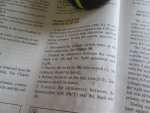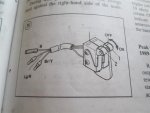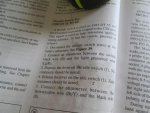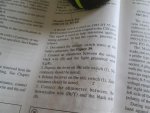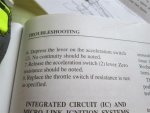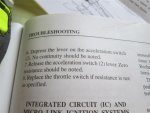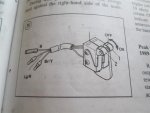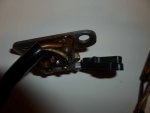bassboy1
Lieutenant Commander
- Joined
- Jun 23, 2006
- Messages
- 1,884
I've been struggling with this issue for the past month or so. I've never run this engine - it came as a parts engine with another one I've purchased, but was told that it did run before.
I swapped this DT '65 powerhead into service on my outboard jet. I knew it had a carb issue, and a broken head bolt, so I took care of the head bolt, replaced head gasket, rebuilt all three carbs, and installed the powerhead. I did the usual stuff, replaced the fuel lines, pulled the known good fuel pump from my other powerhead, etc. Oil injection was already disabled on this powerhead (and pieces were missing), so I simply pulled the gear powering the oil pump, so it wouldn't be turning a dry pump. Carb jets and float bowls were soaked in a can of Gunk dip cleaner, and the main body had the spray can and compressed air routine.
After assembling everything, I couldn't get it to run. Compression was good, spark was good. Even replaced spark plugs, to be safe. No fire. After many cranks, plugs still came out dry, so clearly, no fuel. Finally got it to run on premix sprayed in the intake (this was on the hose, no load). There was clearly fuel in the float bowl, but it wasn't getting drawn into the intake. Finally, got it to run on it's own fuel by giving it a shot of premix sprayed in the intake, and it stayed running. After playing with it enough that it would consistently start, I figured a lake test with some Seafoam was in order. Thought maybe the reed valves were sticking, and it just needed to loosen up.
On the lake, couldn't get it to start at low revs. If I started it at 2/3 throttle and just took off (it's a jet, no issue to start in forward), it would run fine, and stay running until I dropped to half throttle or so. Ran perfectly throughout the top of the rev range, but wouldn't start in the bottom of the rev range, and would die if I tried to drop the throttle. I ran nearly 3 gallons of gas (with 6 oz of Seafoam mixed in) through it on that trip, and still no change.
Back at the shop, it will run on the hose, and stay running, but as soon as I put it in the test tank, it dies. I've gotten it to run as long as 10 seconds or so at idle under load, but as soon as I try to open the throttle, it dies. If I finesse the choke while trying to rev it up, I actually can get it to rev up under load, so it's clearly starving for fuel at lower rev ranges. I've played with the adjustment screws on the carb every way until Sunday, no change.
After the initial rebuilding, I've pulled them off twice since, to verify everything is correct, and to reclean them. I confirmed that compressed air is making it through all the ports I'm blowing through. Maybe a slight improvement after the reclean, but still won't run well enough to run. It will start nearly every single time, just dies in 2 - 10 seconds unless I really play with choke.
I have checked vacuum in the intake runners, and gotten what looks to be acceptable readings (my manual doesn't list anything on that subject). The fact that it runs perfectly at the top end tells me the rest of the engine is working well - it really has to be in the low speed side of the carb.
I've cleaned these things twice. Is there something goofy about these carbs that I'm missing, or is it a case of not clean enough? Would ultrasonic cleaning be a better alternative? Am I ignoring something simple?
I swapped this DT '65 powerhead into service on my outboard jet. I knew it had a carb issue, and a broken head bolt, so I took care of the head bolt, replaced head gasket, rebuilt all three carbs, and installed the powerhead. I did the usual stuff, replaced the fuel lines, pulled the known good fuel pump from my other powerhead, etc. Oil injection was already disabled on this powerhead (and pieces were missing), so I simply pulled the gear powering the oil pump, so it wouldn't be turning a dry pump. Carb jets and float bowls were soaked in a can of Gunk dip cleaner, and the main body had the spray can and compressed air routine.
After assembling everything, I couldn't get it to run. Compression was good, spark was good. Even replaced spark plugs, to be safe. No fire. After many cranks, plugs still came out dry, so clearly, no fuel. Finally got it to run on premix sprayed in the intake (this was on the hose, no load). There was clearly fuel in the float bowl, but it wasn't getting drawn into the intake. Finally, got it to run on it's own fuel by giving it a shot of premix sprayed in the intake, and it stayed running. After playing with it enough that it would consistently start, I figured a lake test with some Seafoam was in order. Thought maybe the reed valves were sticking, and it just needed to loosen up.
On the lake, couldn't get it to start at low revs. If I started it at 2/3 throttle and just took off (it's a jet, no issue to start in forward), it would run fine, and stay running until I dropped to half throttle or so. Ran perfectly throughout the top of the rev range, but wouldn't start in the bottom of the rev range, and would die if I tried to drop the throttle. I ran nearly 3 gallons of gas (with 6 oz of Seafoam mixed in) through it on that trip, and still no change.
Back at the shop, it will run on the hose, and stay running, but as soon as I put it in the test tank, it dies. I've gotten it to run as long as 10 seconds or so at idle under load, but as soon as I try to open the throttle, it dies. If I finesse the choke while trying to rev it up, I actually can get it to rev up under load, so it's clearly starving for fuel at lower rev ranges. I've played with the adjustment screws on the carb every way until Sunday, no change.
After the initial rebuilding, I've pulled them off twice since, to verify everything is correct, and to reclean them. I confirmed that compressed air is making it through all the ports I'm blowing through. Maybe a slight improvement after the reclean, but still won't run well enough to run. It will start nearly every single time, just dies in 2 - 10 seconds unless I really play with choke.
I have checked vacuum in the intake runners, and gotten what looks to be acceptable readings (my manual doesn't list anything on that subject). The fact that it runs perfectly at the top end tells me the rest of the engine is working well - it really has to be in the low speed side of the carb.
I've cleaned these things twice. Is there something goofy about these carbs that I'm missing, or is it a case of not clean enough? Would ultrasonic cleaning be a better alternative? Am I ignoring something simple?




















